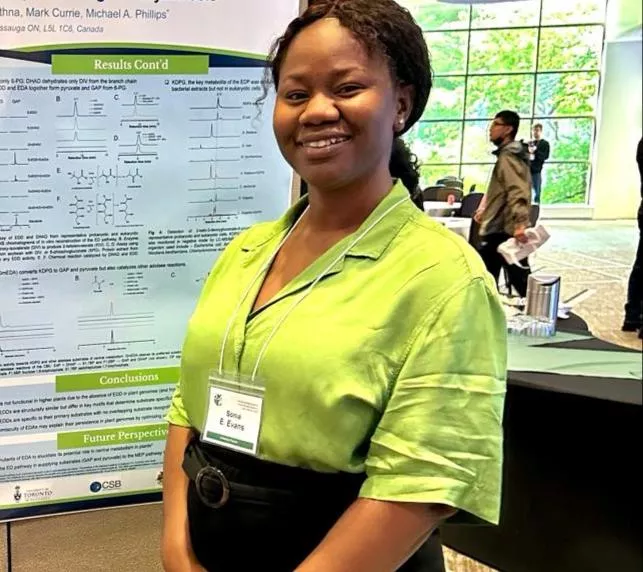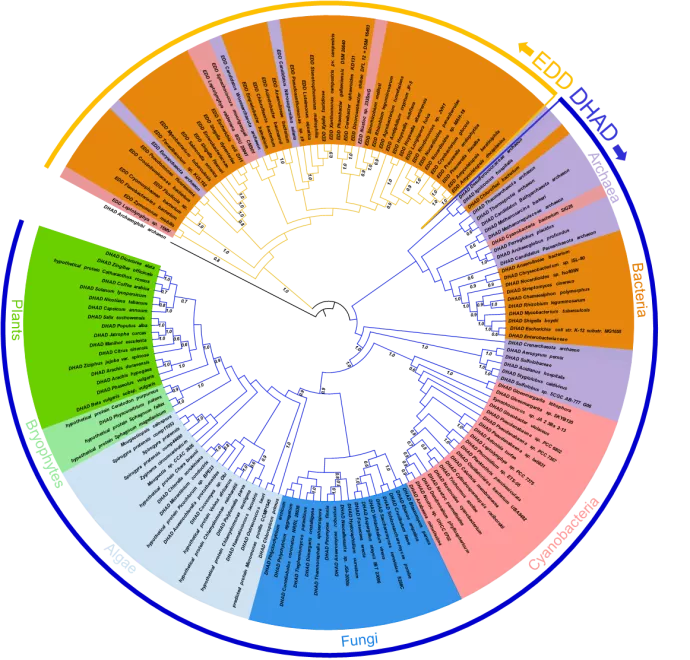
Sonia Evans, PhD student, Phillips Lab, publishes in Nature Communications
Sonia Evans, PhD student, Phillips Lab, publishes paper Plastid ancestors lacked a complete Entner-Doudoroff pathway, limiting plants to glycolysis and the pentose phosphate pathway in Nature Communications
DOI: 10.1038/s41467-024-45384-y
Glucose is a fundamental energy molecule in biology. Most organisms extract energy from it through glycolysis and the related pentose phosphate pathway. However, a few important variant pathways exist in nature. One of these alternative routes, the Entner-Doudoroff pathway, represents a 2-step shortcut to digest glucose rapidly. Although favored by prokaryotes, it has long been suggested that the Entner-Doudoroff pathway is also functional in plants, ferns, algae, cyanobacteria, fungi and diatoms. The generally accepted notion that the Entner-Doudoroff pathway operates in plants arose from a confusion surrounding two evolutionarily related dehydratase enzymes, one from the branched chain amino acid pathway and the other from the Entner-Doudoroff pathway. It was assumed that the enzymes specific to the former pathway could fill in for the latter, and bioinformatic analyses predicted a broad distribution of the Entner-Doudoroff pathway as a result. In their paper, recently published in Nature Communications, Sonia Evans and co-workers show that in fact, the Entner-Doudoroff pathway is restricted to prokaryotes. Their paper reorganizes our understanding of the distribution of this pathway based on biochemical characterization, metabolomics, phylogenetic analysis, and protein structural modeling of both dehydratase types. They identified domains unique to each class of enzyme that explain their highly specific nature and reinterpreted the genomic record by these criteria, prompting a re-evaluation of this pathway’s distribution. Based on these new insights, the authors conclude that plants do not have this pathway because it was absent from the cyanobacterial ancestors which evolved into plastids. This major contribution lays the groundwork to engineer this glycolytic shortcut in plants for synthetic biology applications.
Sonia Evans is a fifth year graduate student in the Phillips lab with an interest in plant metabolic biochemistry.

